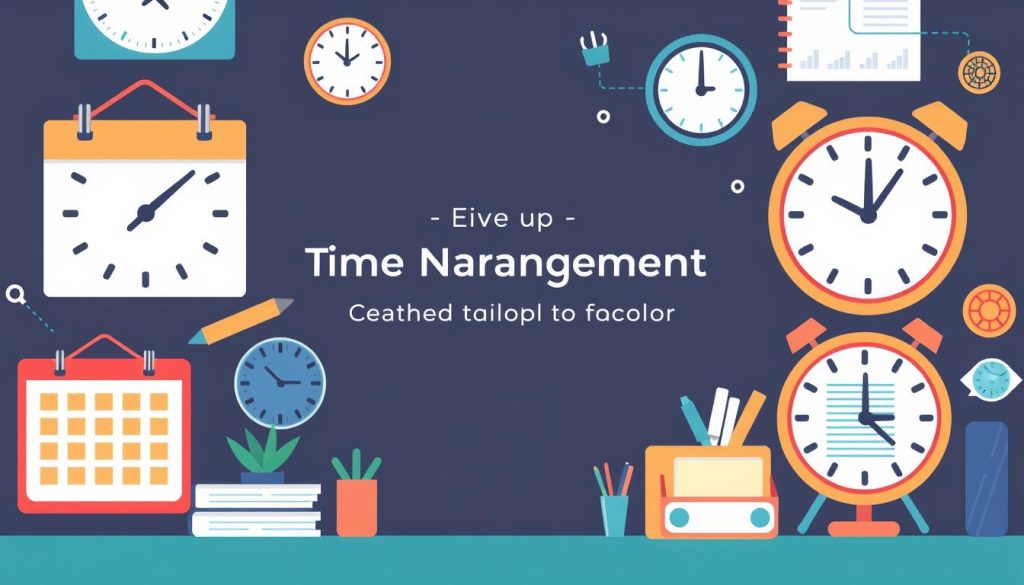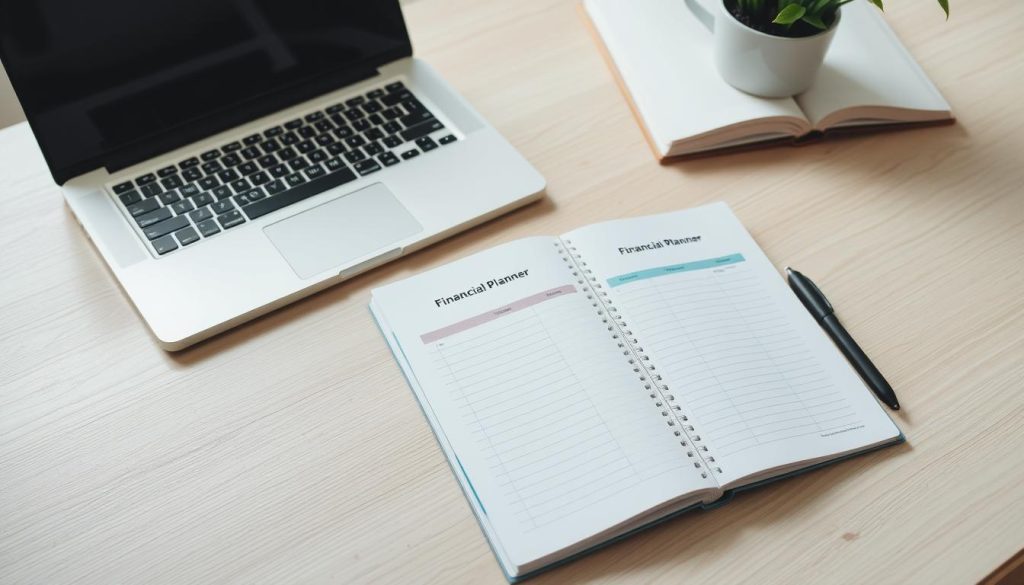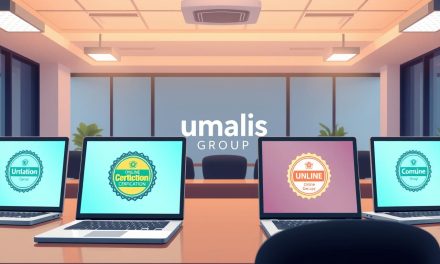As an independent professional, managing your time effectively is crucial to maintaining a healthy personal life. The modern work landscape has transformed how we approach the balance between professional and personal commitments. Without the structure of traditional employment, it can be challenging to separate work from personal life.
The boundaries between work and personal life can become blurred, leading to stress and impacting your mental health. This comprehensive guide will explore effective strategies for achieving work-life balance, ensuring your long-term success, health, and happiness.
Table of Contents
Key Takeaways
- Understand the specific challenges of independent work and how to address them.
- Develop personalized strategies to thrive professionally and personally.
- Learn practical tips to improve your work-life integration.
- Discover the importance of maintaining a healthy balance for your long-term success.
- Implement sustainable practices that support both professional success and personal fulfillment.
Understanding Work-Life Balance for Independent Professionals
Independent professionals often face the challenge of managing their work and personal life effectively to ensure their overall health and stability. Achieving a harmonious balance between professional responsibilities and personal activities is crucial for maintaining productivity, health, and happiness.
Defining Work-Life Balance in the Modern World
Work-life balance refers to the equilibrium between an individual’s work and personal life. In the modern world, this concept has evolved due to the rise of remote work and the blurring of boundaries between work and personal spaces. Maintaining this balance is essential for independent professionals to prevent burnout and maintain their physical and mental health. It involves managing work hours, personal activities, and family responsibilities effectively.
The modern workplace, with its flexible schedules and remote work options, demands a level of self-regulation and discipline to maintain a healthy balance. Effective time management and boundary setting are key to achieving this balance.
Unique Challenges for Independent Professionals
Unlike traditional employees, independent professionals face unique challenges in achieving work-life balance. They often work in isolation, which can lead to overwork or the inability to disconnect from work-related tasks. The lack of a structured work environment and clear boundaries between work and personal life can exacerbate the risk of burnout.
Additionally, the pressure to manage all aspects of their business, from client management to financial planning, can be overwhelming. Creating a dedicated workspace and establishing a routine can help mitigate these challenges.
The Impact of Poor Work-Life Balance
Poor work-life balance can have severe consequences on an independent professional’s health, productivity, and overall career sustainability. It can lead to burnout, decreased productivity, and diminished quality of work. The physical health consequences include increased risk of cardiovascular issues, compromised immune function, and sleep disturbances.
- Mental health impacts such as anxiety, depression, and chronic stress are common among professionals with poor work-life integration.
- Relationships often suffer when work consistently takes precedence over personal connections and family time.
- Creative thinking and problem-solving abilities diminish when you’re constantly in work mode without adequate rest and recovery.
Understanding these potential consequences provides motivation for implementing positive changes to your work-life approach. By recognizing the importance of balance, independent professionals can take proactive steps to enhance their well-being and career longevity.
Why Work-Life Balance Matters
For independent professionals, maintaining a work-life balance is not just a luxury, but a necessity. Achieving this balance is crucial for maintaining overall well-being, ensuring sustainable career longevity, and improving mental and physical health.
Mental Health Benefits
Maintaining a work-life balance has significant mental health benefits. It helps reduce stress and anxiety by creating a clear distinction between work and personal life. This balance allows for relaxation and rejuvenation, which are essential for maintaining mental health. By prioritizing personal time, independent professionals can avoid the risk of burnout and maintain a healthy mental state.
Physical Health Improvements
A balanced lifestyle also contributes to physical health improvements. When work and personal life are balanced, there is more time for physical activity, healthy eating, and adequate sleep. These habits are crucial for preventing chronic diseases and maintaining overall physical well-being. By managing work hours effectively, independent professionals can prioritize their physical health.
Enhanced Productivity and Creativity
Maintaining a work-life balance can lead to enhanced productivity and creativity. When professionals have the time to relax and engage in personal activities, they return to work refreshed and more focused. This balance fosters creativity, as stepping away from work-related tasks can lead to new insights and perspectives. As a result, independent professionals can deliver higher quality work and maintain a competitive edge.
Sustainable Career Longevity
Achieving a balance between work and life is key to sustainable career longevity. By avoiding burnout and maintaining a healthy lifestyle, independent professionals can sustain their careers over the long term. This balance allows for continuous skill development and professional growth without sacrificing personal well-being. For more insights on achieving work-life balance, visit this resource.
| Benefits | Description | Impact |
|---|---|---|
| Mental Health | Reduces stress and anxiety | Maintains mental well-being |
| Physical Health | Promotes physical activity and healthy habits | Prevents chronic diseases |
| Productivity and Creativity | Fosters creativity and focus | Enhances work quality |
| Career Longevity | Prevents burnout and maintains career sustainability | Ensures long-term career success |
Assessing Your Current Work-Life Balance
Evaluating your current work-life balance is a critical step in creating a more sustainable and fulfilling career as an independent professional. It involves understanding how you currently allocate your time between work and personal activities.
To start this assessment, it’s essential to be aware of the signs that indicate an imbalance in your work and personal life. This awareness will help you identify areas that need adjustment.
Signs of Work-Life Imbalance
Recognizing the signs of work-life imbalance is crucial. These signs can manifest in various aspects of your life, including your mental and physical health, relationships, and overall job satisfaction.
- Consistently working long hours without adequate rest
- Neglecting personal care and health
- Feeling overwhelmed or stressed about work during personal time
- Having strained relationships due to work commitments
- Experiencing a lack of enjoyment in activities outside of work
Identifying these signs early can help you take corrective action to achieve a better balance between your work and personal life.
Self-Assessment Tools and Techniques
Several self-assessment tools and techniques can help you evaluate your current work-life balance more objectively. These include:
- Time tracking for 1-2 weeks to identify patterns and imbalances
- Energy mapping throughout the day to determine productivity peaks
- Satisfaction surveys across different life domains
- Boundary assessments to evaluate the separation between work and personal time
- Stress inventories to quantify the impact of work pressures on your well-being
By using these tools and techniques, you can gain a clearer understanding of your current situation and make informed decisions to improve your work-life balance.
Setting Clear Boundaries Between Work and Personal Life
The line between work and personal life can easily blur for independent professionals, but setting boundaries is key. To maintain a healthy work-life balance, it’s essential to establish clear distinctions between work and personal time.
Establishing Work Hours and Sticking to Them
One of the most effective ways to maintain balance is by setting regular work hours and adhering to them. This involves creating a schedule that mirrors a traditional workday, even when working from home or on a flexible schedule. By doing so, you can prevent work from encroaching on personal time. It’s about creating a routine that signals to yourself and others when you are in work mode and when you are not.
Creating Physical Boundaries in Your Workspace
Creating physical boundaries is another crucial aspect of maintaining work-life balance. This can be achieved by designating a specific workspace that is used only for work. When you leave this space, you can psychologically disconnect from work-related tasks. For those who work from home, this might mean having a dedicated office or workspace that is not used for personal activities.
| Boundary Type | Description | Benefits |
|---|---|---|
| Physical | Designated workspace | Improved focus, reduced work creep |
| Digital | Managing notifications | Reduced distractions, enhanced productivity |
| Temporal | Establishing work hours | Clearer separation between work and personal life |
Digital Boundaries: Managing Notifications and Availability
In an always-connected world, digital boundaries are essential for maintaining work-life balance. This involves managing notifications, using technology tools like app blockers and scheduled do-not-disturb settings, and establishing clear communication policies with clients regarding your availability. By doing so, you can prevent the constant intrusion of work into your personal time.
By implementing these strategies, independent professionals can better manage their time and maintain a healthier balance between their work and personal life.
Effective Time Management Strategies

To achieve a balance between work and personal life, independent professionals must employ effective time management strategies. Effective time management enables you to prioritize tasks, manage client expectations, and maintain a healthy work-life balance.
Effective time management is not just about getting more done in less time; it’s about creating a system that allows you to achieve your goals while maintaining your personal well-being. In this section, we will explore various time management techniques tailored for independent professionals.
Time Blocking and Task Batching
Time blocking involves scheduling your tasks into fixed, uninterrupted blocks of time. This technique helps you focus on a single task without multitasking, thereby increasing productivity. Task batching is similar, where you group similar tasks together and complete them in one session.
For example, you might dedicate a block of time in the morning to checking and responding to emails, followed by a block for focused work on a project. This approach helps in managing your time more efficiently and reducing the stress associated with multitasking.
The Pomodoro Technique for Focused Work
The Pomodoro Technique is a time management method that involves working in focused 25-minute increments, followed by a 5-minute break. After four cycles, you take a longer break of 15-30 minutes. This technique helps maintain your focus and prevent burnout.
By using the Pomodoro Technique, you can enhance your productivity and maintain a sustainable work pace. It’s particularly useful for tasks that require intense concentration, as it provides regular breaks to rest your mind.
Prioritization Methods for Independent Professionals
Effective prioritization is essential for independent professionals who must manage all aspects of their business. Implementing frameworks like the Eisenhower Matrix can help distinguish between urgent and important tasks.
Aligning your daily priorities with your long-term business goals and personal values ensures that you make meaningful progress. You can learn more about enhancing your productivity and efficiency by visiting our blog post on augmenting productivity and efficiency.
Leveraging Technology for Better Work-Life Balance
In the quest for work-life balance, independent professionals can harness technology to streamline their work processes and enhance their personal well-being.

Automation Tools to Reduce Workload
Automation tools can significantly reduce the workload of independent professionals by taking over repetitive tasks. Tools like Zapier or IFTTT can automate tasks across different applications, saving time and reducing the mental burden.
For instance, automating email responses or client onboarding processes can free up more time for focused work and personal activities, thus improving work-life balance.
Apps for Time Tracking and Project Management
Effective time management is crucial for maintaining balance in life. Apps like Toggl, Harvest, or Asana help independent professionals track their time and manage projects efficiently. These tools provide insights into how time is spent, enabling better planning and balance between work and personal life.
Using these apps, professionals can prioritize tasks, set realistic goals, and maintain a healthy work-life balance by avoiding overwork.
Using Technology to Disconnect
While technology can be a source of distraction, it can also be used to facilitate disconnection from work. Digital wellness tools and apps designed to promote mindfulness and breaks can help professionals disconnect from their computer and work-related tasks during personal time.
Implementing such tools and setting clear boundaries, like technology-free zones or times, can help maintain a clear distinction between work and personal life, enhancing overall balance.
Creating a Dedicated Workspace
To achieve a better balance between work and personal life, it’s essential to create a dedicated workspace. This space serves as a physical boundary between your professional and personal activities, helping you maintain focus and reduce the likelihood of work spilling into your personal time.
Designing an Ergonomic Home Office
An ergonomic home office is crucial for productivity and comfort. Start by investing in a good chair and desk that promote proper posture. Ensure your workspace has adequate lighting, with a mix of natural and artificial light to reduce eye strain. Organize your office supplies and equipment within easy reach to minimize movement and maximize efficiency.
Consider the layout of your home office to avoid clutter and distractions. A well-designed workspace can enhance your work-life balance by creating a clear distinction between work and leisure areas.
Separating Work and Living Spaces
For many independent professionals, the challenge lies in separating work and living spaces. If possible, dedicate a specific room or area solely for work. This physical separation helps to mentally distinguish between work time and personal time. If you live in a small space, use room dividers or curtains to create a visual boundary.
Establishing this boundary is crucial for maintaining a healthy work-life balance. It allows you to « leave » work at the end of the day by physically leaving the workspace.
Alternative Workspaces for Variety
Incorporating variety in your work environment can enhance both productivity and work-life balance. Consider alternative workspaces such as co-working spaces, libraries, cafes, or outdoor settings. These environments can provide a change of scenery, stimulate creativity, and prevent monotony.
| Workspace Type | Benefits | Considerations |
|---|---|---|
| Co-working Spaces | Networking opportunities, structured environment | Cost, noise levels |
| Libraries | Quiet, focused environment | Limited availability, restricted hours |
| Cafes | Social atmosphere, accessibility | Noise, distractions, cost of food/drinks |
| Outdoor Settings | Natural environment, flexibility | Weather conditions, distractions |
By strategically using different workspaces, you can maintain a fresh perspective and adapt your work environment to suit different tasks and energy levels.
Managing Client Expectations and Communication

Striking the right balance between work and personal life starts with managing client expectations effectively. As an independent professional, your ability to communicate clearly and set boundaries is crucial for maintaining a healthy work-life balance. This involves more than just being available; it’s about managing your time efficiently and ensuring that your clients understand your availability and boundaries.
Setting Clear Availability Hours
One of the most effective ways to manage client expectations is by setting clear availability hours. This means defining specific times when you are available for work-related activities, such as checking emails or taking calls. By doing so, you create a clear distinction between your work time and personal time, which is essential for maintaining balance. It’s essential to communicate these hours clearly to your clients through various channels, such as your website, email signature, or during initial consultations.
As the saying goes, « Time is what we want most, but what we use worst. » – William Penn. This quote emphasizes the importance of managing your time effectively to achieve a better work-life balance.
Communicating Boundaries Professionally
Communicating your boundaries professionally is vital to maintaining a positive relationship with your clients while protecting your personal time. This involves being clear about your response times, availability for urgent matters, and the process for handling emergencies. Using a professional tone and maintaining a consistent message across all communication channels helps in setting the right expectations. It’s also beneficial to educate your clients on the importance of planning and lead times to reduce last-minute urgent requests.
Handling Urgent Requests Without Compromising Balance
Handling urgent requests is a challenge many independent professionals face. Developing systems for urgent client needs is essential. This can include creating clear definitions of what constitutes a genuine emergency versus a routine urgent request, implementing tiered response systems, and developing backup resources or referral networks for times when you’re truly unavailable. By having these systems in place, you can address urgent requests without compromising your work-life balance. It’s about finding a balance between being responsive to your clients’ needs and maintaining your personal boundaries.
By implementing these strategies, independent professionals can effectively manage client expectations and communication, ensuring a more balanced and productive work environment.
Implementing Self-Care Practices in Your Daily Routine
Implementing self-care practices is a critical step for independent professionals to ensure they maintain their physical, mental, and social health. Achieving a work-life balance requires intentional effort, and self-care is at the core of this balance. By incorporating self-care into daily routines, independent professionals can enhance their productivity, reduce stress, and improve their overall quality of life.
Physical Self-Care: Exercise, Sleep, and Nutrition
Physical self-care is foundational to maintaining energy levels and overall health. This includes:
- Engaging in regular exercise, such as walking or yoga, to boost mood and energy.
- Prioritizing sleep to ensure adequate rest and recovery.
- Nurturing nutrition by consuming a balanced diet that supports health and productivity.
By focusing on these aspects, independent professionals can create a strong foundation for their personal life and career.
Mental Self-Care: Mindfulness and Stress Management
Mental self-care is equally important for managing stress and maintaining mental clarity. Practices such as mindfulness meditation and deep breathing exercises can help reduce anxiety and improve focus. It’s also crucial to establish boundaries to protect mental health, such as limiting work hours and avoiding overcommitting.
As noted by mindfulness experts, « A mindful approach to work can transform the way you experience your job and your life. »
Social Self-Care: Maintaining Relationships
Social self-care involves nurturing relationships with family and friends, which is vital for emotional support and a sense of connection. Independent professionals should prioritize quality time with loved ones and create systems to stay connected despite busy schedules. This might involve scheduling regular check-ins or activities with family and friends.
By maintaining these connections, independent professionals can ensure they have a support network that enhances their balance and overall well-being.
The Importance of Taking Breaks and Vacations
In the fast-paced world of independent professionals, taking breaks and vacations is not just a luxury, but a necessity. Maintaining a healthy work-life balance is crucial for productivity, mental health, and overall job satisfaction. As an independent professional, managing your work schedule to include regular breaks and vacations can be challenging, but it is essential for long-term success.
Daily Breaks and Their Impact on Productivity
Daily breaks are vital for maintaining productivity. Taking short breaks throughout the day can help you recharge and maintain focus. According to a study, taking a 15-minute break every hour can improve productivity by up to 15%.
Implementing daily breaks can be as simple as taking a short walk, meditating, or doing some stretching exercises. Using the Pomodoro Technique, which involves working in focused 25-minute increments followed by a 5-minute break, can also enhance productivity.
| Break Activity | Duration | Productivity Benefit |
|---|---|---|
| Short Walk | 5-10 minutes | Refreshes the mind |
| Meditation | 5-10 minutes | Reduces stress |
| Stretching Exercises | 5 minutes | Improves physical well-being |
Planning and Taking Vacations as an Independent Professional
Planning vacations as an independent professional requires careful consideration of your work schedule and client commitments. It is essential to communicate your vacation plans to your clients in advance to manage their expectations. Creating a plan for your work during your absence, such as delegating tasks or setting up an automated response on your email, can help ensure a smooth operation.
As Anne Lamott once said,
« Almost everything will work again if you unplug it for a few minutes, including you. »
This quote emphasizes the importance of taking time off to recharge.
Disconnecting Completely During Time Off
Disconnecting completely during time off is crucial for reaping the benefits of a vacation. This means avoiding work-related activities, such as checking emails or taking work calls. Implementing technology solutions, such as turning off notifications or using an app that helps you stay off work-related tasks, can aid in this process.
By taking breaks and vacations, independent professionals can improve their work-life balance, increase productivity, and maintain their mental and physical health. It is about creating a balance that works for you and your business.
Finding Hobbies and Activities Outside of Work

For independent professionals, cultivating non-work-related hobbies and activities is essential for maintaining a healthy balance between work and personal life. Engaging in activities outside of work not only rejuvenates the mind and body but also brings new perspectives and skills that can enhance professional work.
The Importance of Non-Work Identities
Having identities and interests outside of work is crucial for maintaining a healthy work-life balance. It allows independent professionals to step away from the pressures of their work and engage in activities that bring joy and fulfillment. This separation is vital for preventing burnout and maintaining mental health.
Non-work identities also provide a sense of accomplishment and self-worth that is not tied to professional achievements. This can be particularly important for independent professionals who may experience fluctuations in their work.
Scheduling Time for Hobbies and Interests
Scheduling time for hobbies and interests is essential to ensure they are not overlooked in a busy schedule. Treating hobbies as non-negotiable appointments can help in maintaining a consistent routine. It’s about creating a balance where work does not encroach on personal time.
Using calendars or planners to block out time for hobbies can be an effective strategy. This not only ensures that there is dedicated time for personal activities but also helps in planning around work commitments.
Using Hobbies to Enhance Professional Skills
Many hobbies and activities can indirectly enhance professional skills. For example, creative pursuits like painting or writing can improve problem-solving skills, while physical activities can enhance energy levels and productivity.
Understanding the cognitive benefits of cross-pollination between different domains of interest and expertise can help independent professionals leverage their hobbies to enhance their professional work. It’s about recognizing the transferable skills and perspectives gained from personal interests.
| Hobby | Transferable Skill | Professional Benefit |
|---|---|---|
| Photography | Attention to detail | Enhanced observational skills for market analysis |
| Writing | Communication skills | Improved content creation for marketing |
| Sports | Teamwork and discipline | Better collaboration and time management |
« The way to get started is to quit talking and begin doing. » – Walt Disney
This quote emphasizes the importance of taking action and engaging in activities that bring value and joy, whether personal or professional.
Building a Support Network
Building a robust support network is crucial for independent professionals to maintain a healthy work-life balance. As an independent professional, you face unique challenges that can impact your mental and physical health. A strong support network can help you manage stress and prevent burnout.
Connecting with Other Independent Professionals
Connecting with other independent professionals can provide a sense of community and understanding. You can share experiences, advice, and resources with those who face similar challenges. This network can be built through online communities, professional associations, or local meetups. By doing so, you can reduce feelings of isolation and improve your mental health.
Some ways to connect include joining online forums or social media groups dedicated to independent professionals, attending industry conferences, or participating in coworking spaces. These connections can lead to valuable collaborations and a stronger sense of belonging.
Involving Family and Friends in Your Balance Journey
Involving your family and friends in your work-life balance journey can provide additional support. It’s essential to communicate your needs and boundaries clearly with them. By doing so, you can ensure they understand your challenges and can offer the right kind of support.
You can involve your loved ones by sharing your goals and challenges with them, setting clear expectations, and seeking their advice when needed. This can help strengthen your relationships and reduce the feeling of being overwhelmed by work demands.
When to Seek Professional Support
Recognizing when to seek professional support is an important aspect of maintaining a sustainable work-life balance. If you’re experiencing persistent stress, burnout, or mental health issues, it may be time to seek help from a professional, such as a coach, therapist, or business consultant.
- Identify the signs that indicate when your work-life challenges have exceeded your personal resources.
- Understand the different types of professional support available.
- Evaluate the return on investment for professional support as a business expense that enhances sustainability.
By taking a proactive approach to seeking support, you can address challenges before they become critical, ensuring your continued professional success and personal well-being.
Achieving Work-Life Balance While Working Remotely
Remote work environments present unique challenges to maintaining work-life balance, requiring intentional strategies. As an independent professional, working from home or other remote locations can blur the lines between work and personal life, leading to overwork and burnout.
To mitigate these risks, it’s essential to establish routines and boundaries that signal work transitions. This includes creating a dedicated workspace and setting clear work hours. By doing so, you can maintain a healthy work-life balance and reduce the likelihood of overwork.
Creating Routines That Signal Work Transitions
Establishing routines that signal the start and end of the workday can help you transition between work and personal life. This might involve creating a morning routine that prepares you for work, such as exercising or meditating, and another routine that signals the end of the workday, like taking a short walk.
Using remote work technology intentionally can also help. For example, you can use time-tracking apps to monitor your hours and stay focused on tasks.
Avoiding Isolation and Maintaining Social Connections
Working remotely can be isolating, making it challenging to maintain social connections. To combat this, it’s crucial to schedule time with family and friends or join professional networks and communities. This can help you feel more connected and reduce the sense of isolation that can come with working from home.
Regularly scheduled virtual or in-person meetups can also help maintain a sense of community and belonging.
Preventing Overwork in a Remote Environment
To prevent overwork, it’s essential to create visibility systems that help you recognize when you’re exceeding your intended work hours. This might involve setting clear boundaries, such as not checking work emails or taking work calls outside of work hours.
By being mindful of the tendency to do « just one more thing, » you can maintain a healthier balance between work and personal life. Implementing these strategies can help you achieve a more sustainable work-life balance while working remotely.
Financial Planning for Better Work-Life Balance
As an independent professional, managing your finances effectively is key to maintaining a healthy work-life balance. Financial planning is not just about managing your income; it’s about creating a system that supports your personal and professional goals.

Setting Realistic Income Goals
Setting realistic income goals is the foundation of financial planning for independent professionals. This involves understanding your business expenses, personal needs, and the fluctuations in your income. To achieve this, you need to assess your financial situation over a period, identifying peak and low seasons in your business. Creating a budget that accounts for these variations is crucial. It ensures you can meet your financial obligations during slow periods.
Moreover, your income goals should align with your work-life balance objectives. For instance, if you want to take a vacation, you need to plan your income around that goal. Adjusting your pricing or workload to accommodate such goals is a strategic move.
Building an Emergency Fund for Peace of Mind
An emergency fund is a financial safety net that provides peace of mind and financial stability. For independent professionals, it acts as a buffer during unexpected events or financial downturns. The general rule of thumb is to save three to six months’ worth of living expenses. This fund can be built gradually by allocating a portion of your income each month.
Having an emergency fund in place allows you to take calculated risks and make decisions that align with your work-life balance goals without the stress of immediate financial pressure. It also enables you to handle emergencies without derailing your work or personal life.
Planning for Time Off and Vacations
Planning for time off is essential for maintaining work-life balance. Independent professionals can achieve this by developing pricing strategies that factor in paid time off. Creating a savings plan specifically for vacations or personal time can also help. It’s about anticipating your needs and planning your finances accordingly.
Understanding the cyclical nature of your business can help you leverage busy periods to save for slower times. This proactive approach to financial planning ensures that you can enjoy your time off without financial stress.
Measuring and Adjusting Your Work-Life Balance Over Time
To ensure long-term success, it’s crucial to regularly measure and adjust your work-life balance. As an independent professional, your career demands and personal life can fluctuate, making it essential to monitor and tweak your balance regularly.
Regular Check-ins with Yourself
Conducting regular check-ins is vital to understanding your current work situation and personal life. This involves assessing your mental and physical health, balance between work and personal activities, and making necessary adjustments. Implementing self-assessment tools and techniques can help you track your progress over time.
- Schedule weekly or monthly reflections to evaluate your current state.
- Use journals or apps to track your time and activities.
- Assess your mental and physical health regularly.
Adjusting Strategies as Your Career Evolves
As your career evolves, your strategies for maintaining work-life balance may need to change. This could involve adapting your work schedule, learning new time management techniques, or setting new boundaries. Being flexible and open to change is crucial for maintaining balance in the face of new challenges or opportunities.
For instance, you might need to adjust your client expectations or communication strategies as your business grows. Regularly reviewing and adjusting your strategies ensures that you remain on track with your work-life balance goals.
Celebrating Improvements and Successes
Celebrating your successes and progress is essential for maintaining motivation and reinforcing the behaviors that contribute to your work-life balance. This can be as simple as acknowledging your achievements, treating yourself to something special, or sharing your celebration with friends and family.
By recognizing and celebrating your achievements, you reinforce the importance of maintaining a healthy balance between your work and personal life.
Conclusion: Creating a Sustainable Work-Life Balance as an Independent Professional
As we conclude this comprehensive guide, it’s clear that achieving a sustainable work-life balance is a continuous journey for independent professionals. The strategies and techniques discussed throughout this article are designed to help you create a harmonious balance between your work and life. To recap, we’ve explored the importance of understanding your current work-life balance, setting clear boundaries, and leveraging technology to enhance your productivity.
One of the key takeaways is that work-life balance is not a static state, but a dynamic equilibrium that shifts with different life and work seasons. This means that you need to be flexible and adapt your approach as your career and personal circumstances evolve. We’ve also emphasized the importance of self-care, taking breaks, and pursuing hobbies outside of work to maintain your overall well-being.
To achieve a sustainable work-life balance, it’s essential to implement a personalized approach that aligns with your unique values, goals, and circumstances. This involves regularly assessing your work-life balance and making adjustments as needed. By doing so, you’ll be able to maintain a healthy balance that supports both your professional achievement and personal fulfillment.
As an independent professional, it’s crucial to develop a long-term vision for your career that incorporates work-life balance as a fundamental component of success. This means prioritizing your life outside of work and making intentional decisions that support your overall well-being.
In conclusion, creating a sustainable work-life balance requires ongoing attention and intentional practice. By following the principles and strategies outlined in this guide, you’ll be well on your way to achieving a harmonious balance between your work and life. Remember, it’s a journey, not a destination.
FAQ
What are the most significant challenges to achieving a healthy work-life balance as an independent professional?
Independent professionals often face challenges such as managing work hours, maintaining physical and mental health, and balancing commitments to family and friends. The lack of a structured work environment can lead to overwork or the blurring of boundaries between work and personal life.
How can I establish a routine that promotes work-life balance while working from home?
To achieve a better balance, it’s essential to create a dedicated workspace, establish clear work hours, and stick to them. Using time management techniques like time blocking or the Pomodoro Technique can help you stay focused and avoid the tendency to overwork.
What role does technology play in maintaining a healthy work-life balance?
Technology can be both a facilitator and a hindrance to balance. Automation tools, time tracking apps, and project management software can help reduce workload and increase efficiency. However, it’s crucial to set digital boundaries, such as managing notifications and setting clear availability hours, to prevent the intrusion of work into personal time.
How can I prioritize self-care as an independent professional?
Prioritizing self-care involves making time for physical activities, such as exercise, ensuring adequate sleep and nutrition, and practicing mindfulness or stress management techniques. Scheduling time for hobbies and maintaining social connections are also vital for mental and emotional well-being.
What strategies can I use to manage client expectations and maintain a healthy work-life balance?
Setting clear availability hours, communicating boundaries professionally, and handling urgent requests efficiently are key strategies. It’s also important to establish a clear understanding with clients about your work processes and response times to manage their expectations effectively.
How often should I assess my work-life balance, and what should I be looking for?
Regular check-ins, ideally every few months, can help you assess whether your current strategies are working. Look for signs of imbalance, such as overwork, stress, or neglect of personal activities, and adjust your strategies as needed to maintain a healthy balance.
What are some effective ways to disconnect from work during vacations or time off?
To fully disconnect, plan ahead by wrapping up tasks or making arrangements for their completion while you’re away. Using technology to automate responses or handing over tasks can help. It’s also essential to avoid checking work emails or taking work calls during your time off.
How can I build a support network as an independent professional?
Building a support network involves connecting with other independent professionals through communities or networks, involving family and friends in your balance journey, and seeking professional support when needed. This network can provide valuable advice, emotional support, and help in maintaining a healthy work-life balance.





